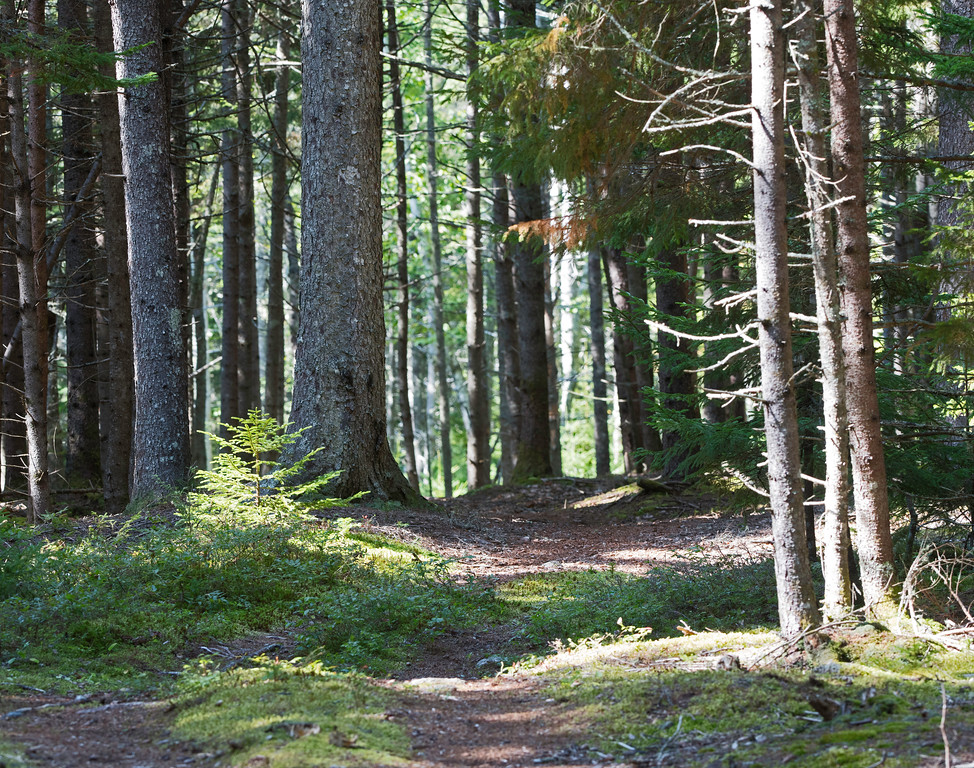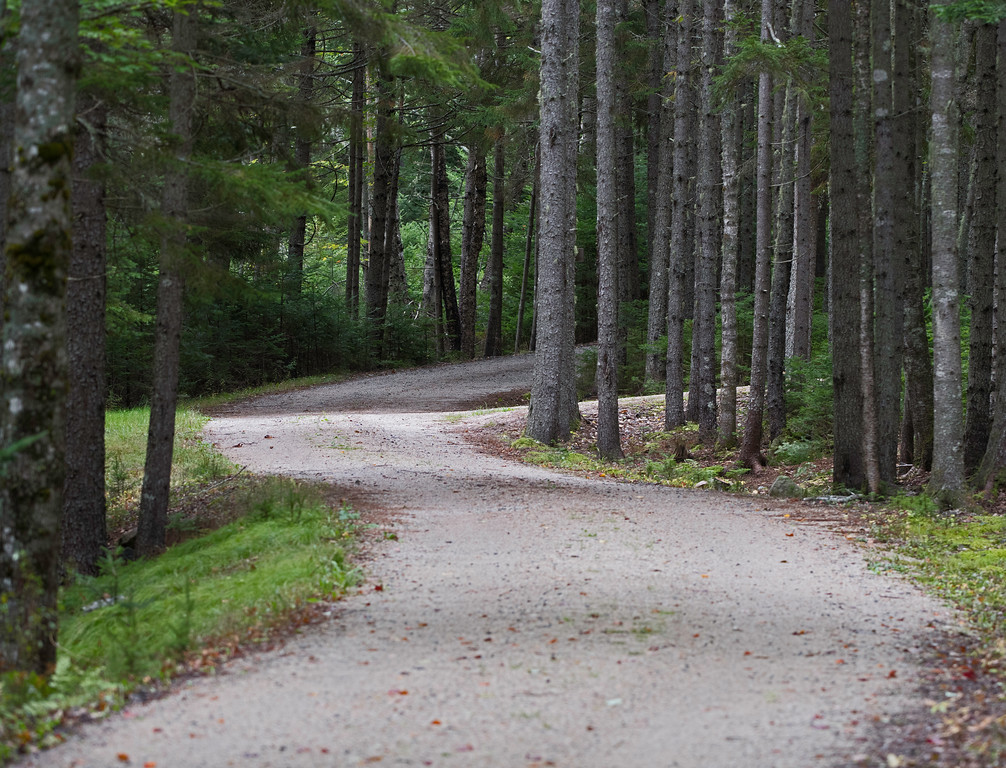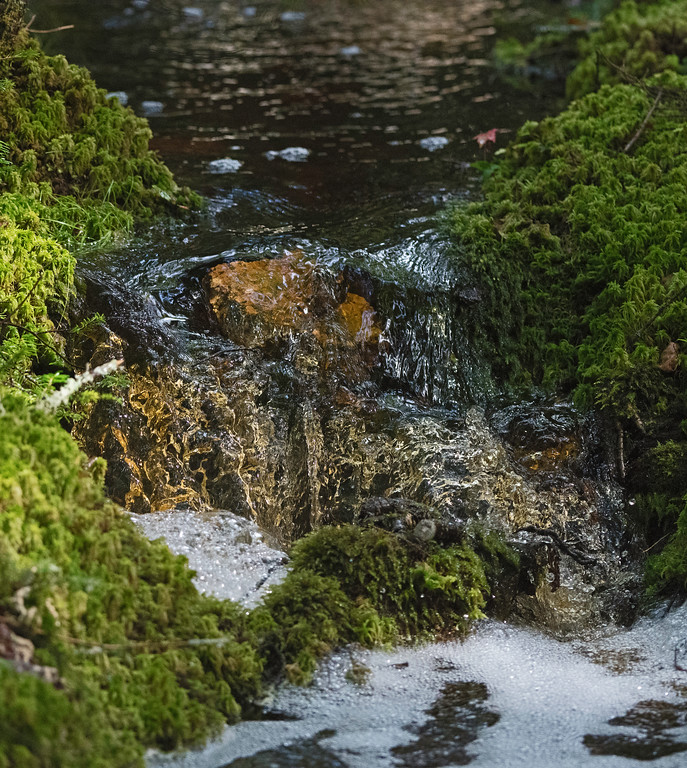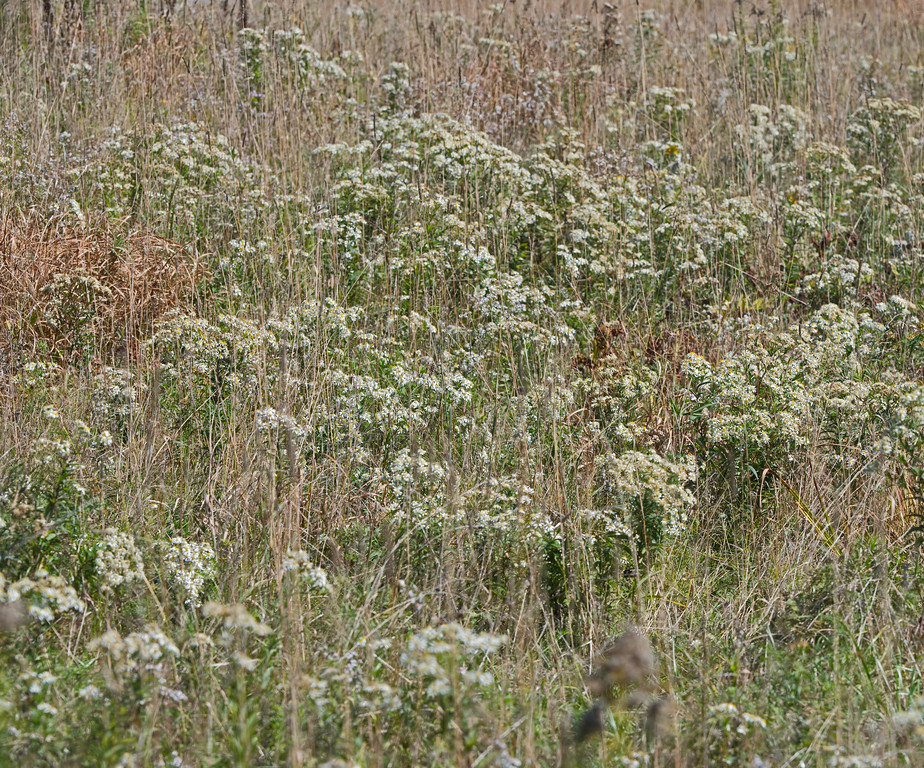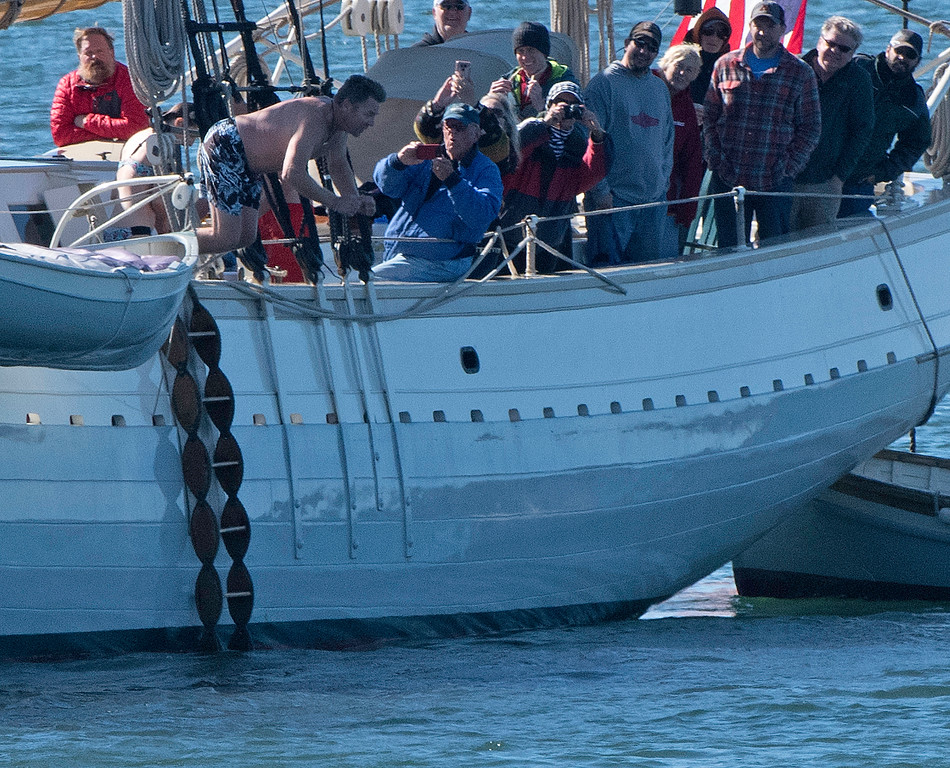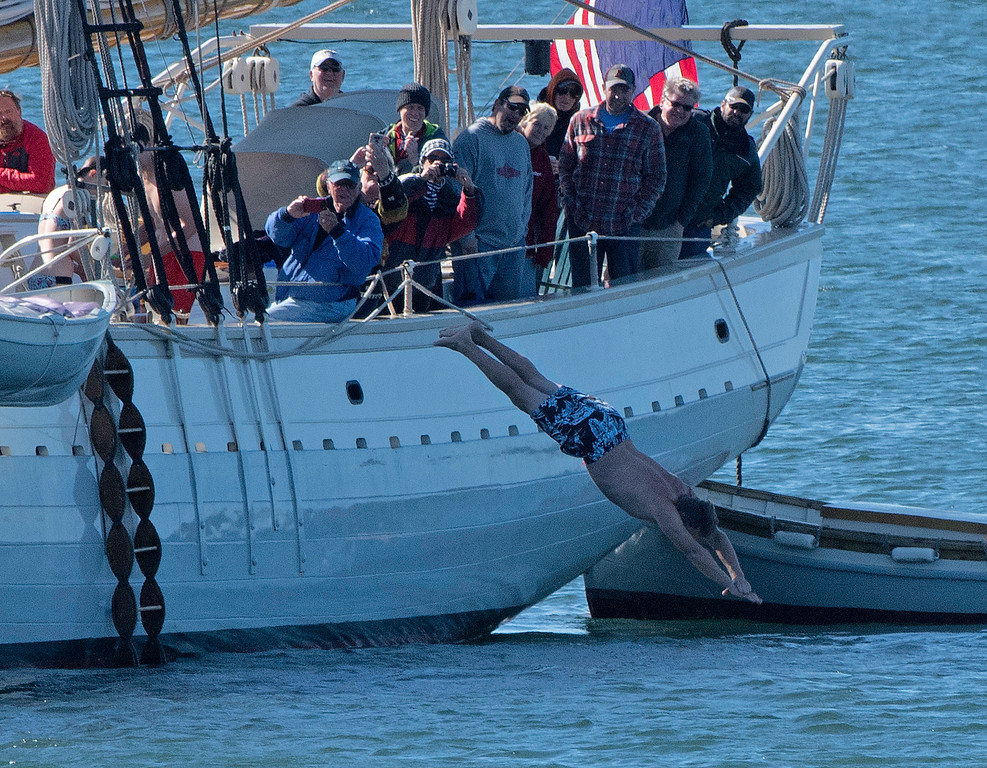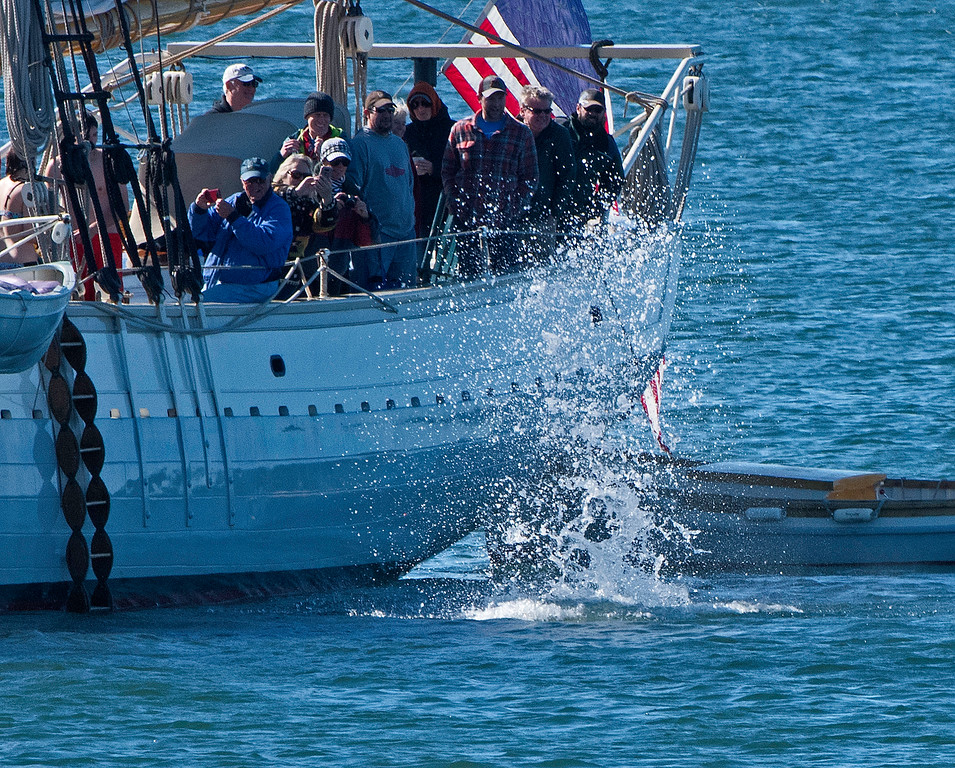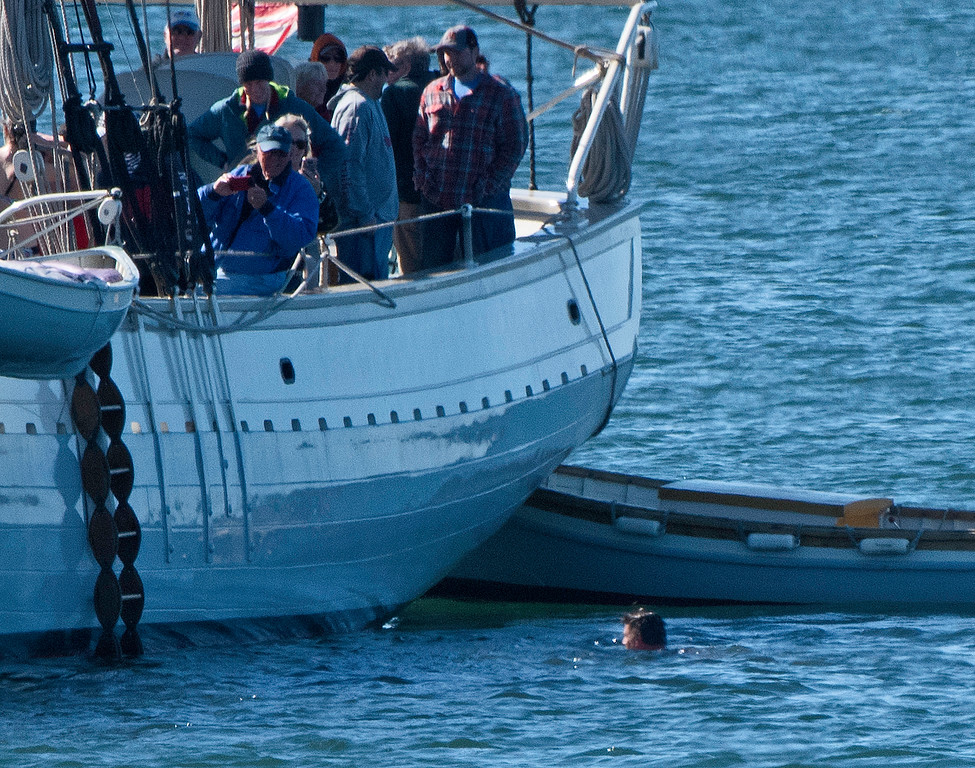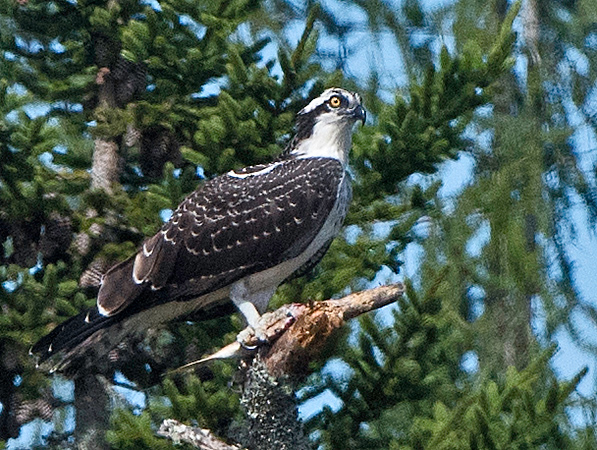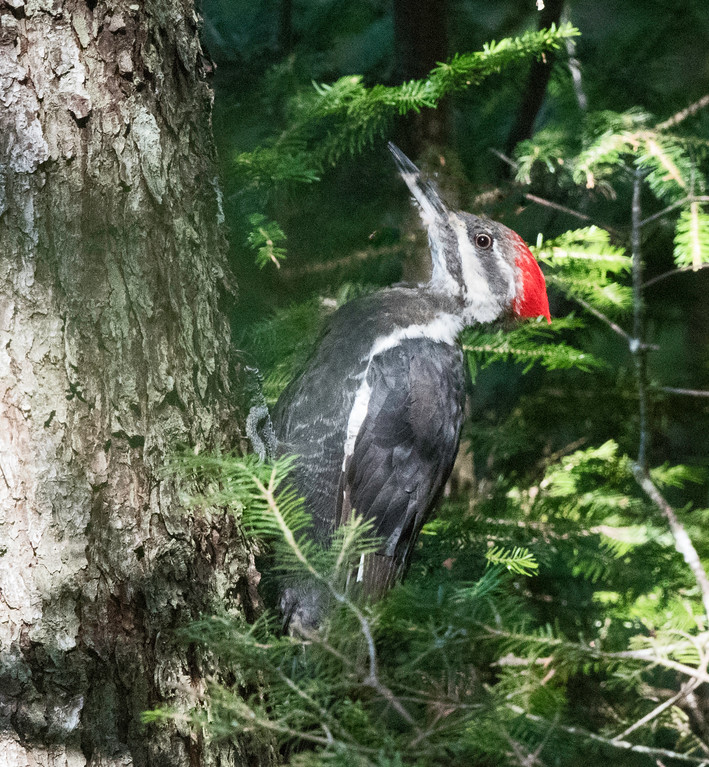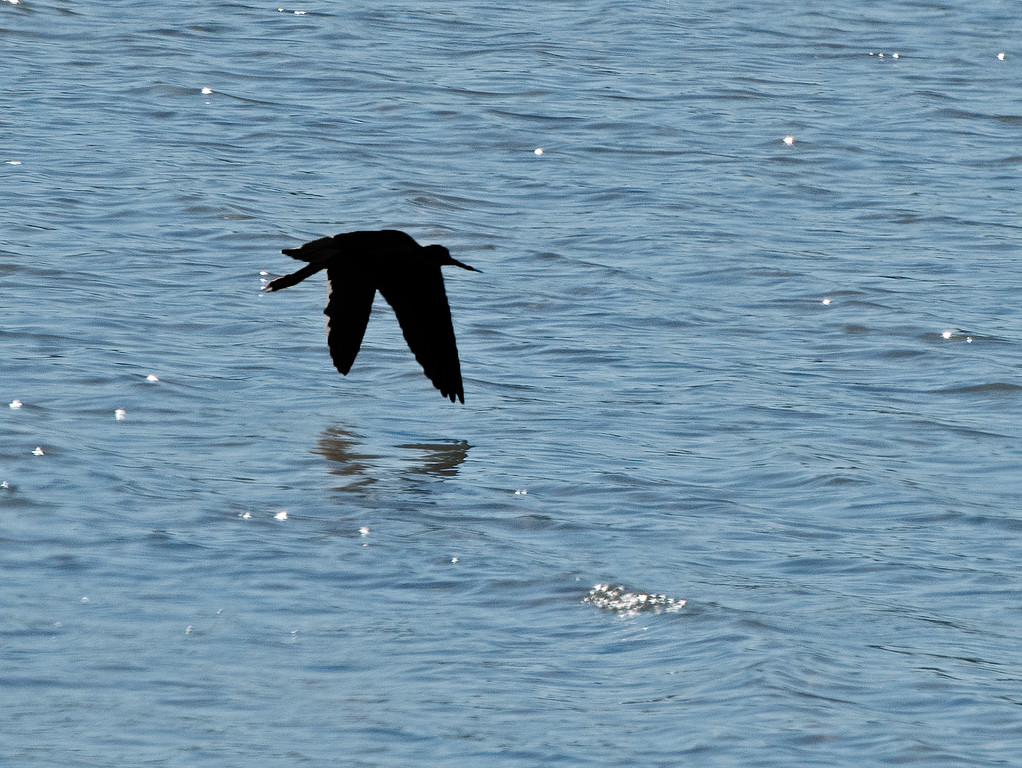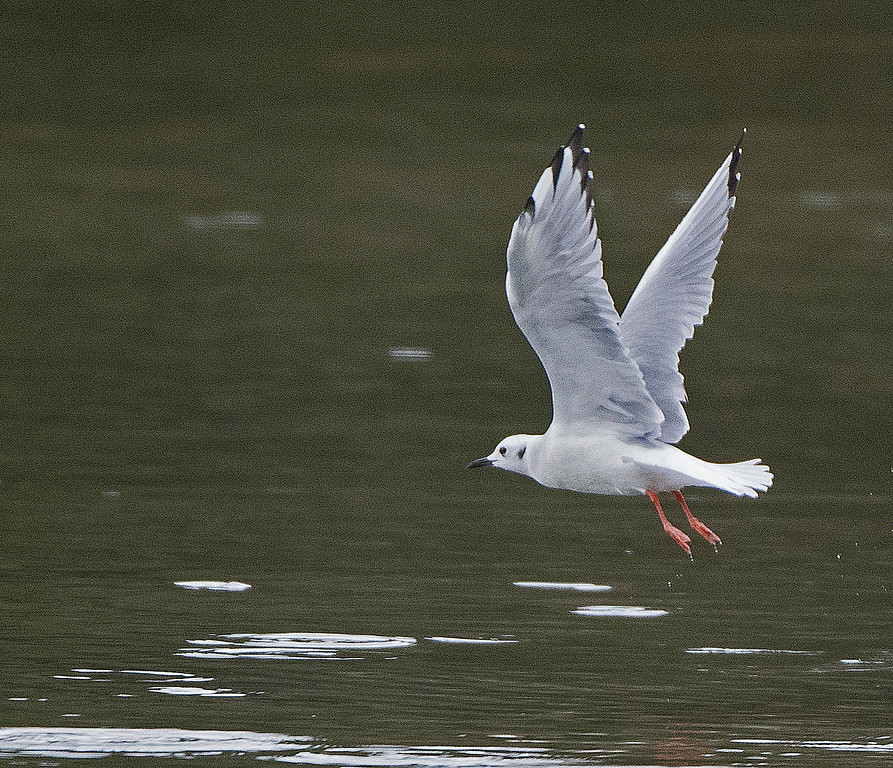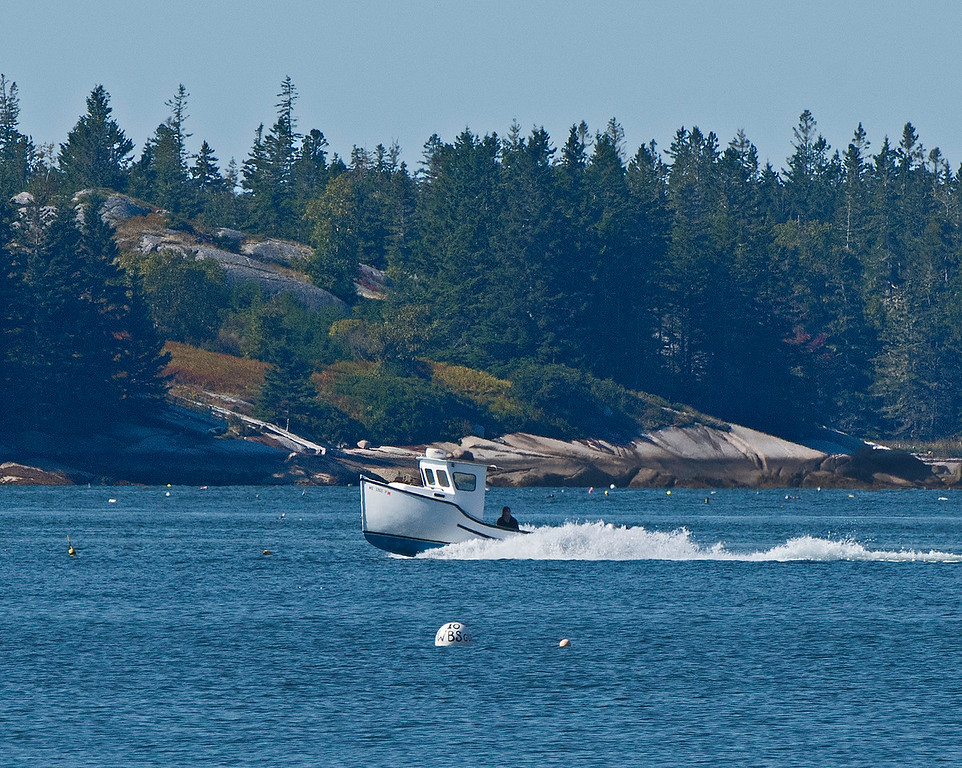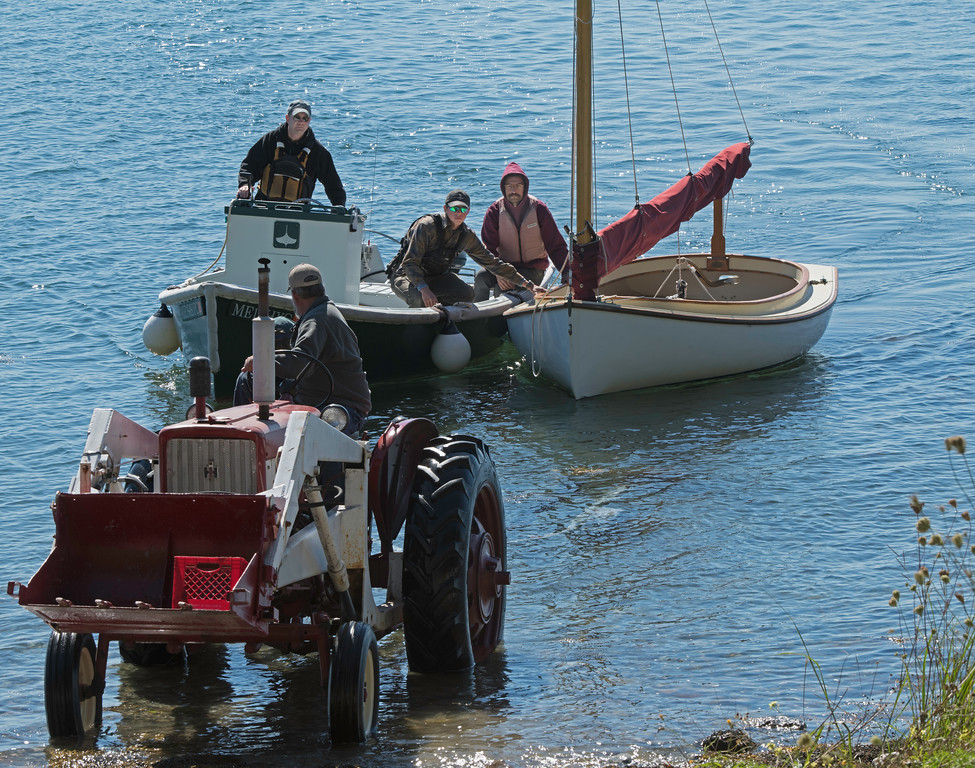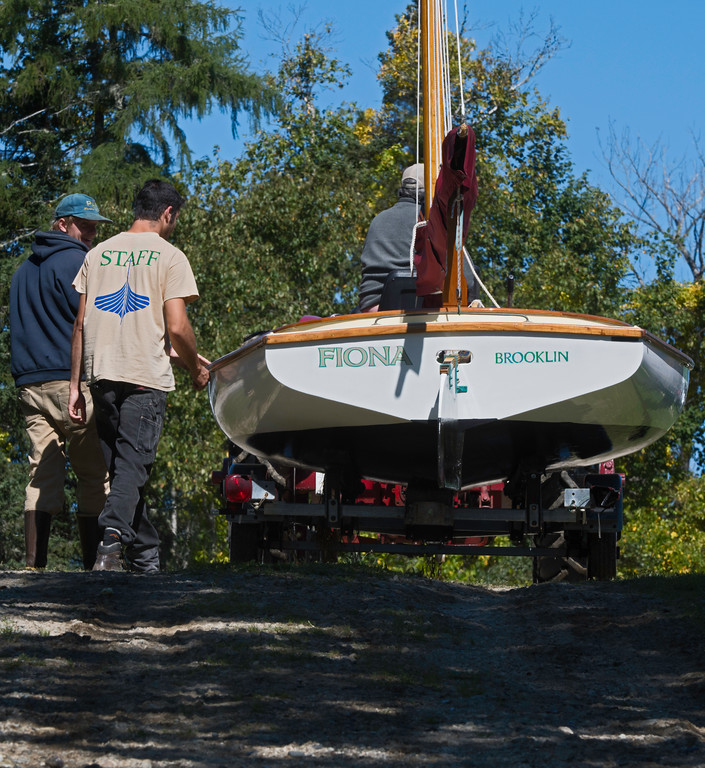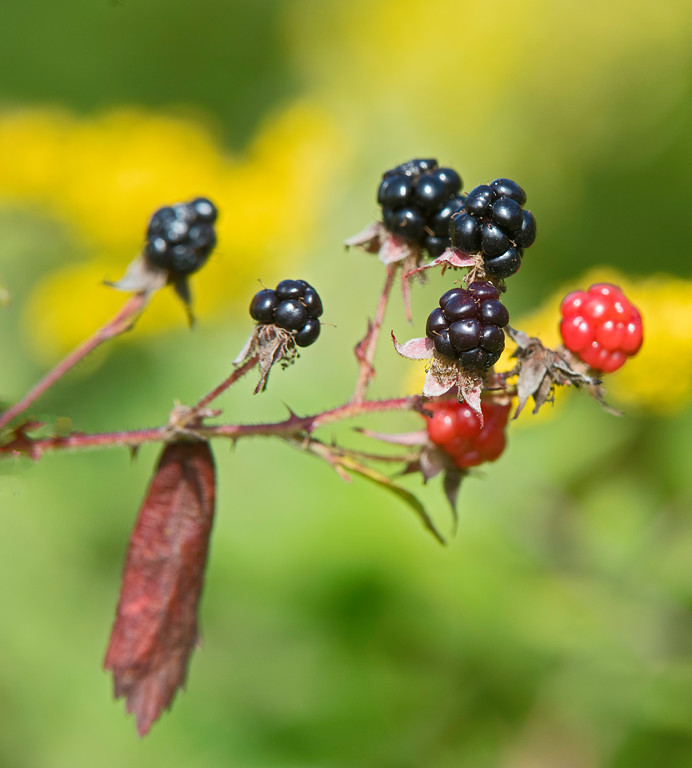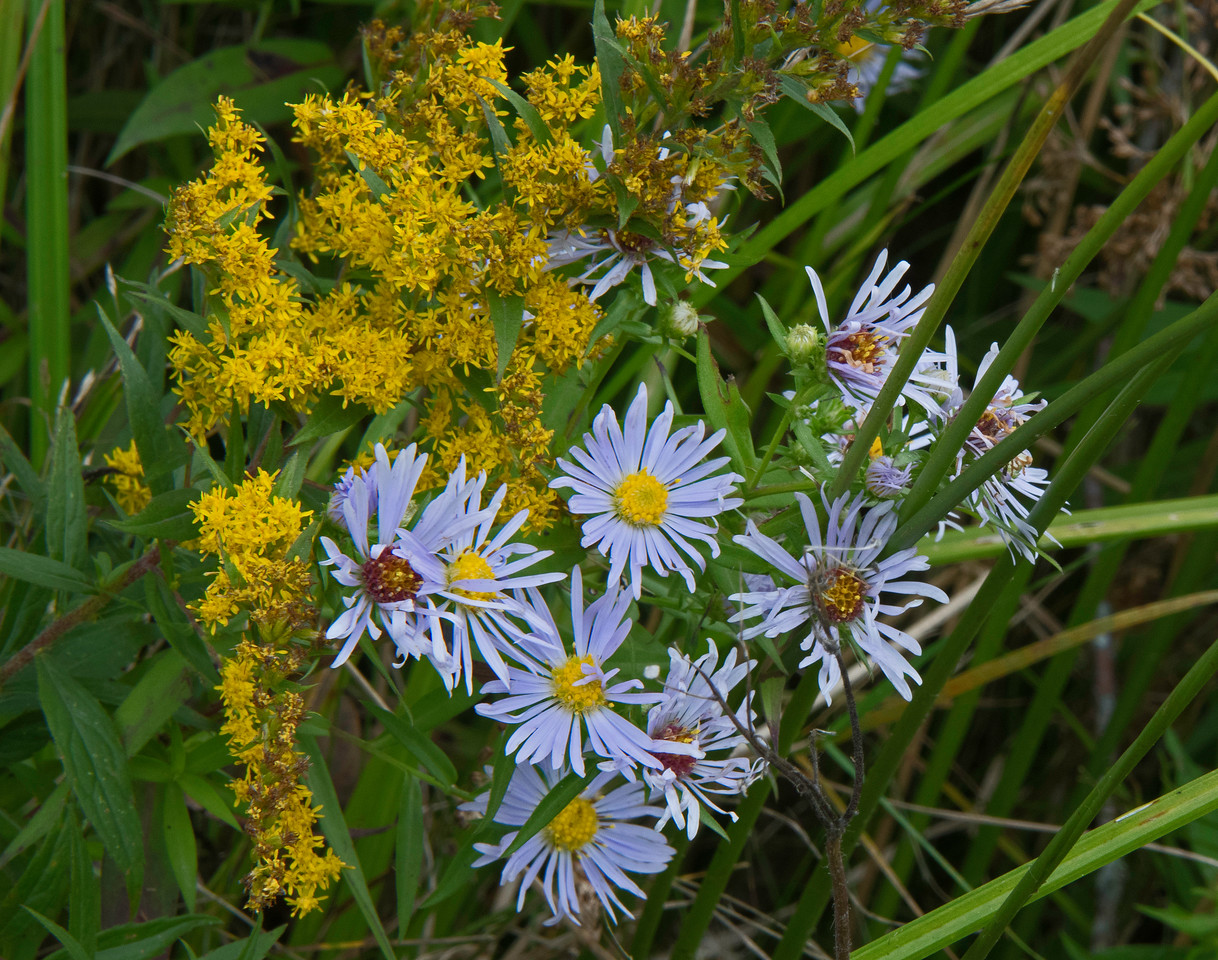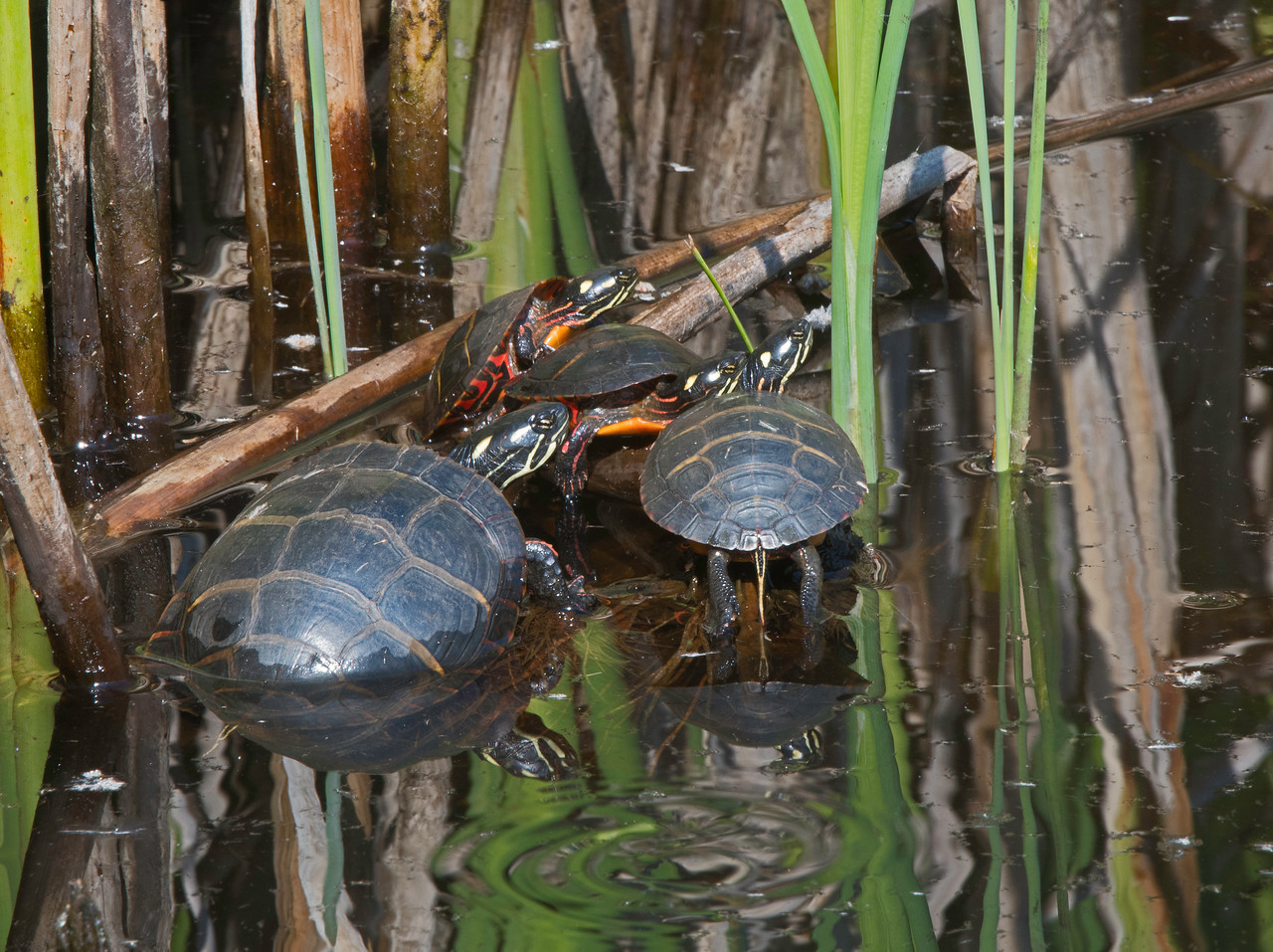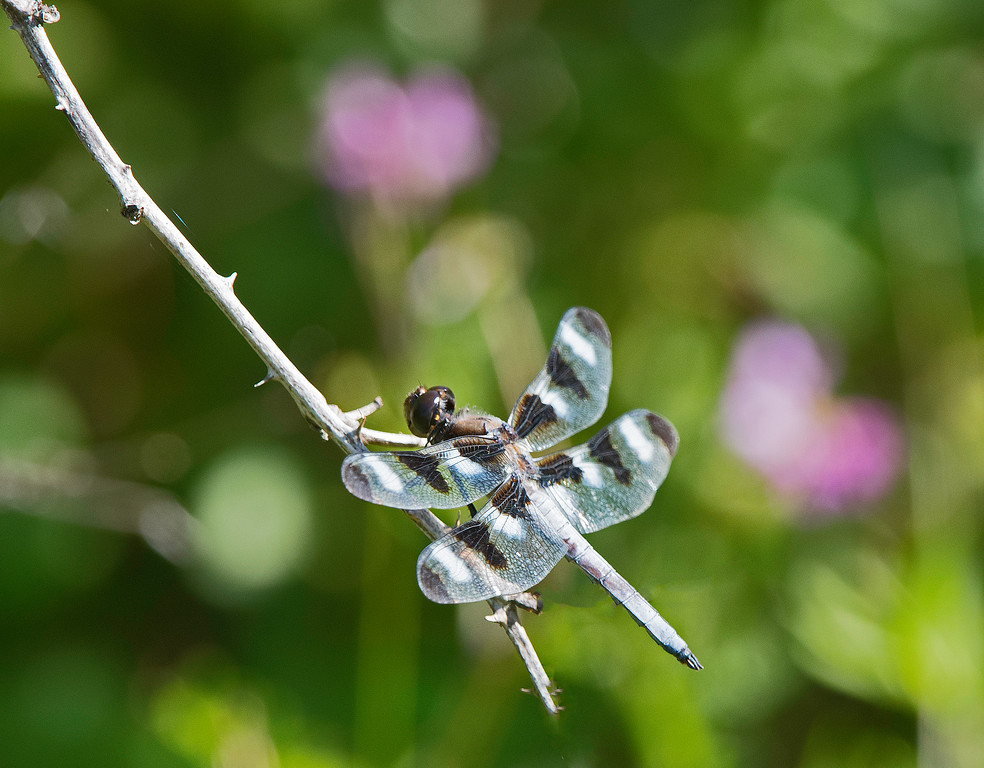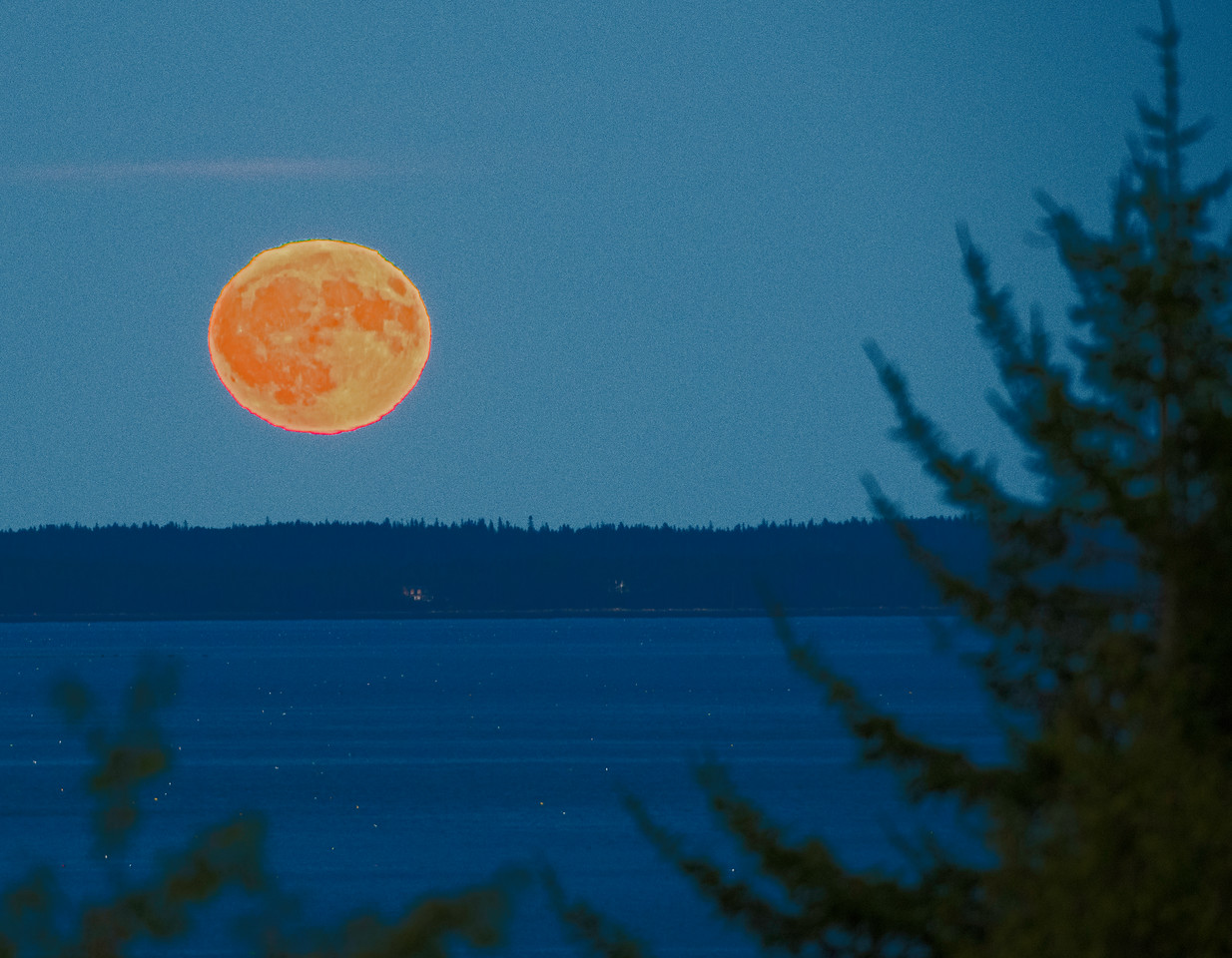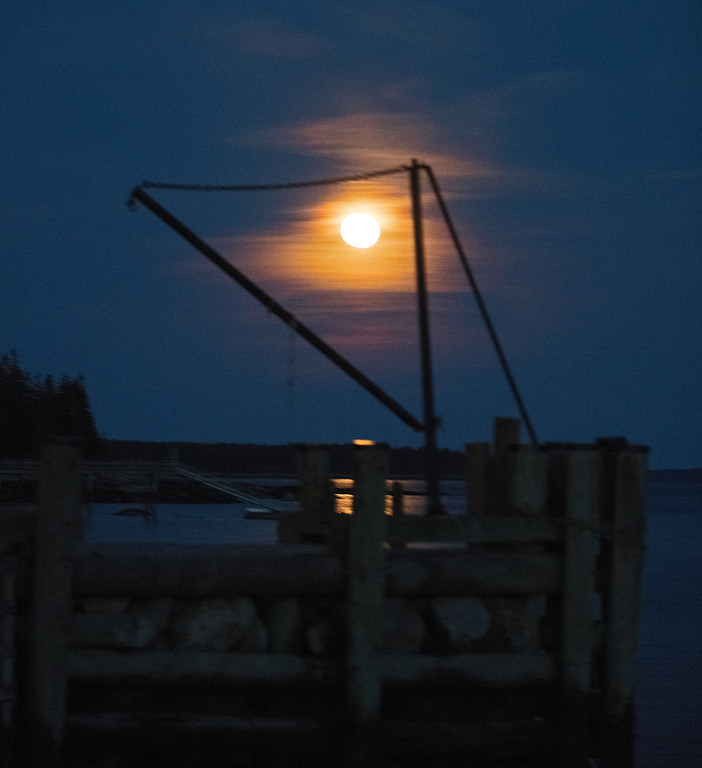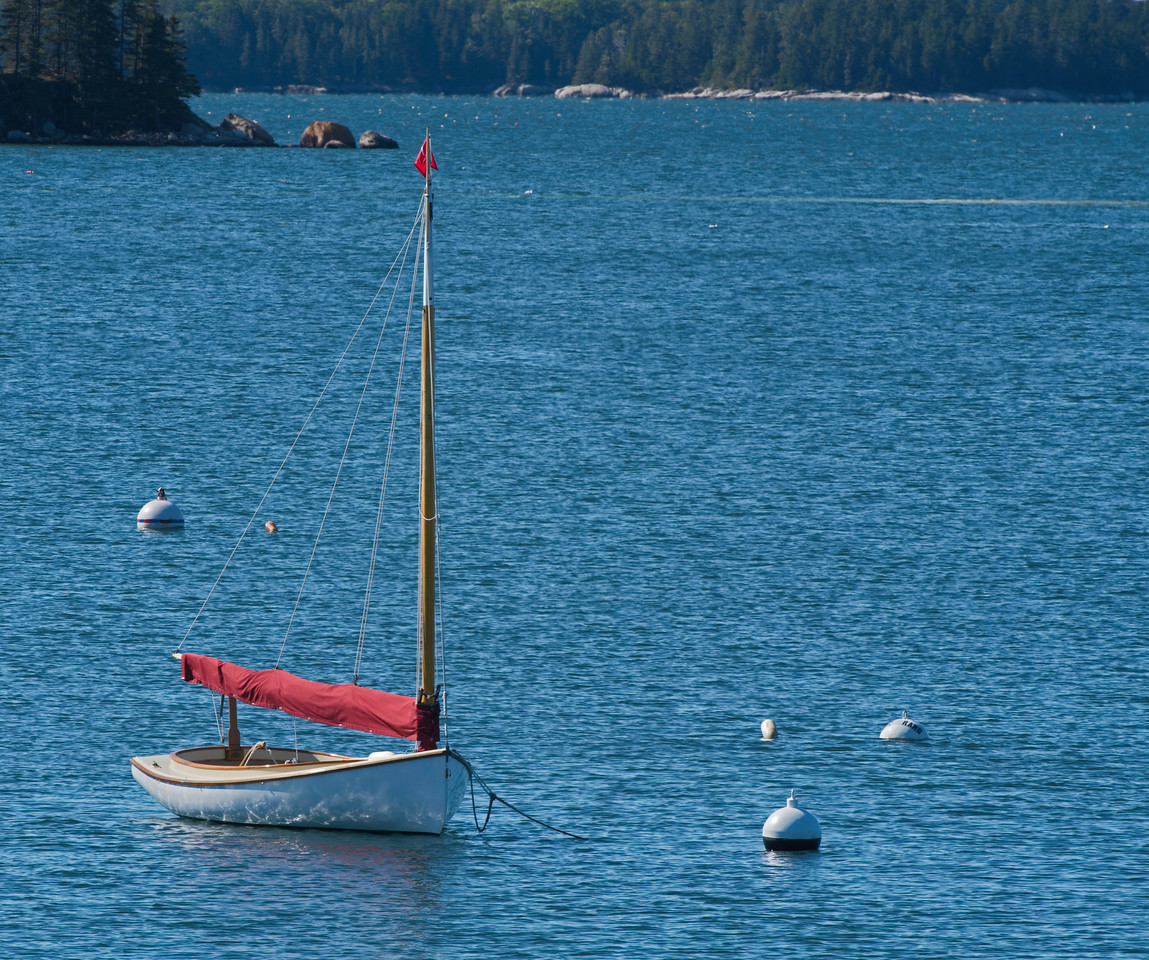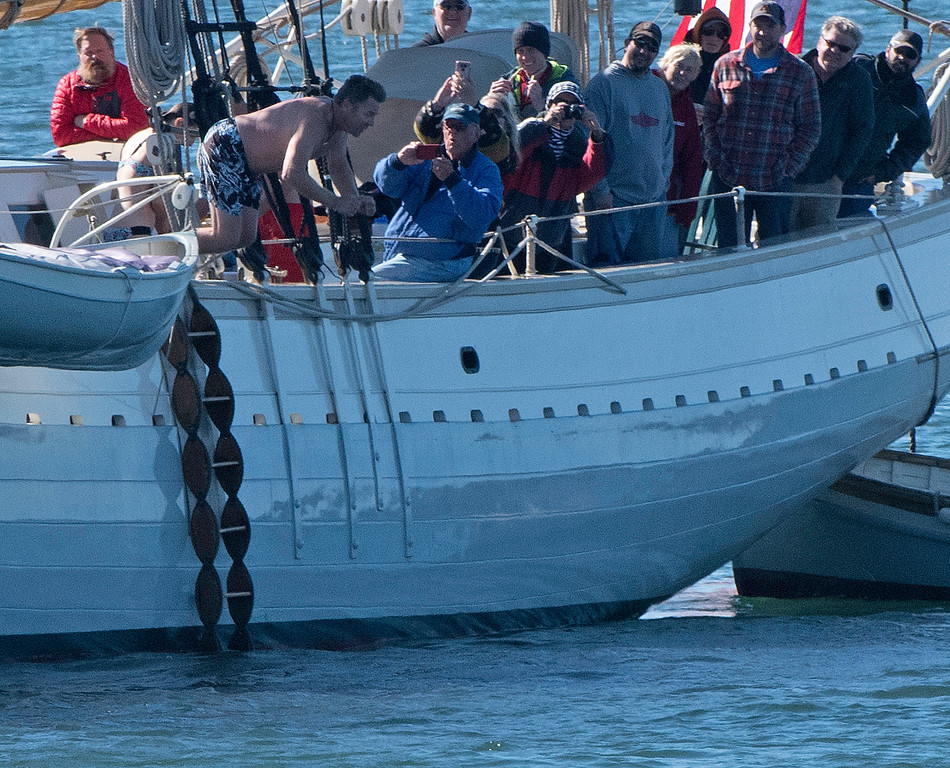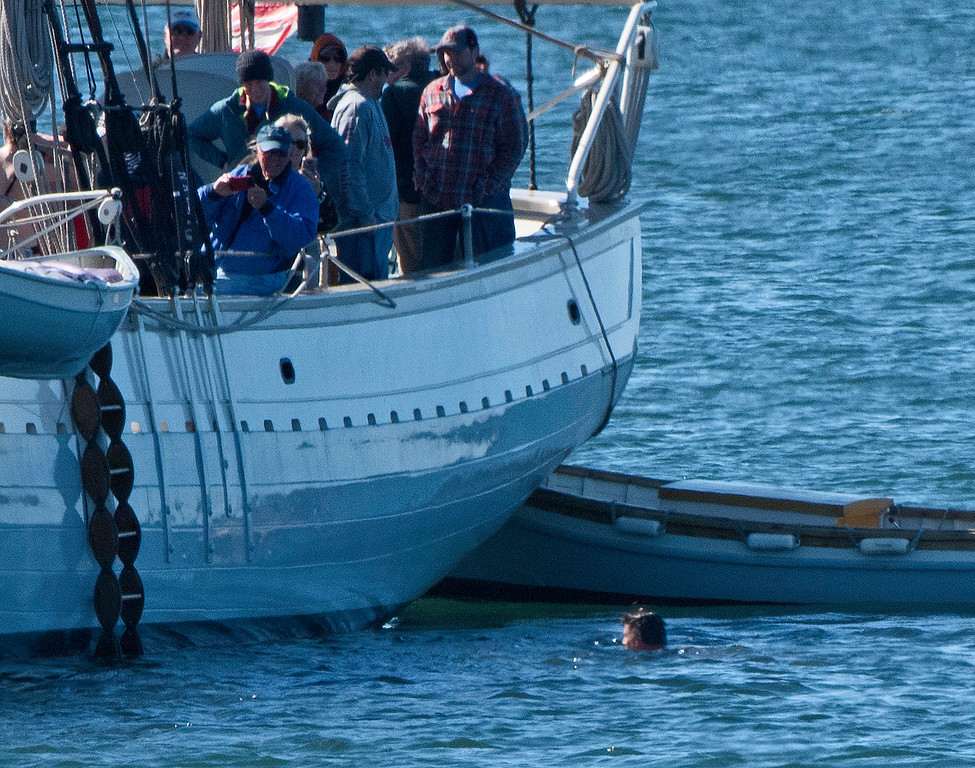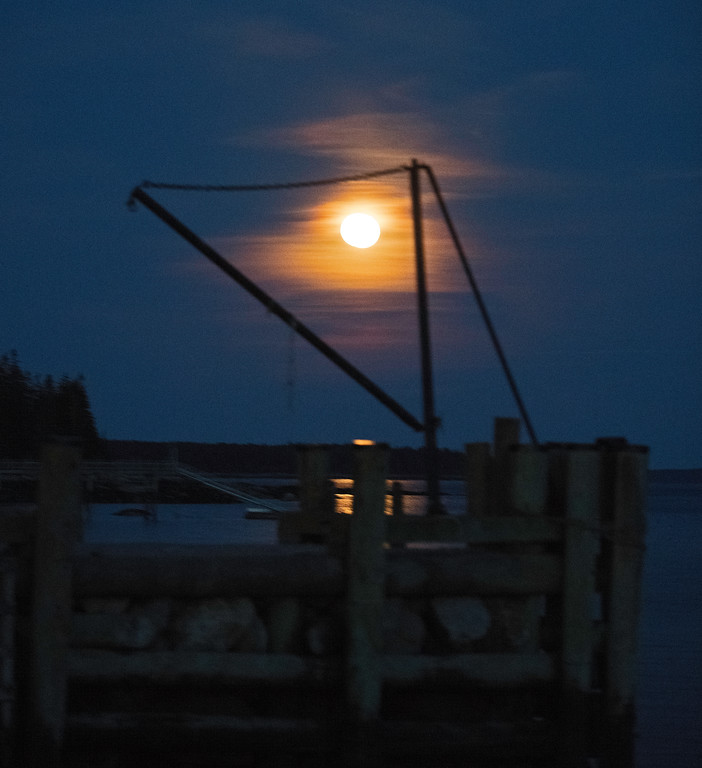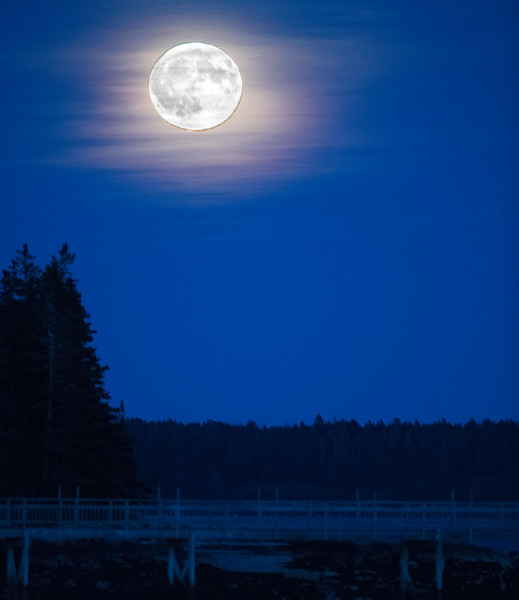This is Ray McDonald mowing our sloping North Field in Thursday’s (September 4’s) chilly mist.
The mower attached to his tractor is commonly called a “Bush Hog®,” a brand name for only one make of rotary field and brush mower. (The company says that, when it first demonstrated its product in 1951, an amazed farmer said: “That thing eats bushes like a hog.”)
The distinctive feature of these machines is their big, flexible blades; they’re on hinges and bounce away when a rock or stump is hit. Many people here keep non-agricultural fields that are mowed in late summer or fall.
The annual mowing preserves the summer wild flowers, grasses and sedges that are homes for many animals and insects. Without mowing, the field soon would return to forest and brambles. See also the image in the first Comment space. (Brooklin, Maine)
















